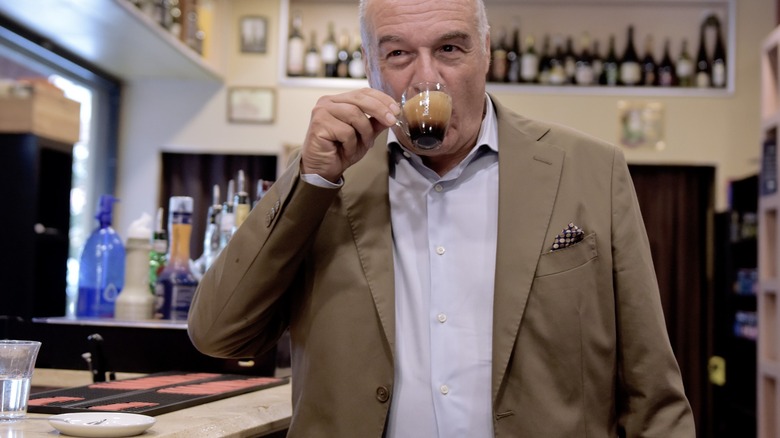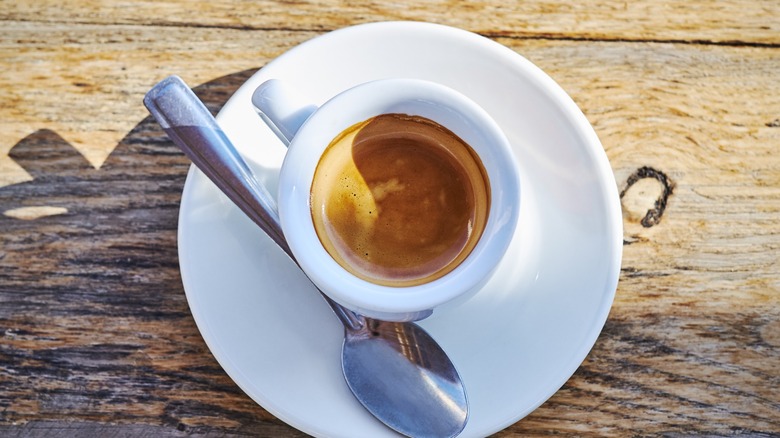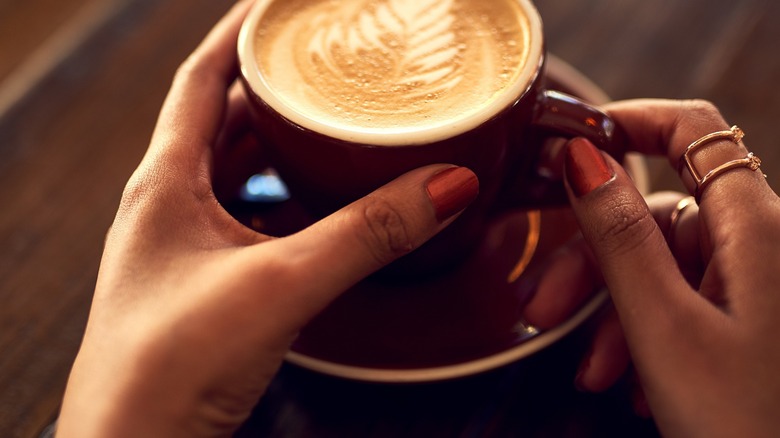Why Sitting Down For Coffee In Italy Will Cost You More Money
It comes as a surprise to no one that Italians have a serious relationship with coffee. From the time of day you drink it (cappuccinos are only for mornings) to how fast it goes down (an espresso, the most common type of coffee, is taken in just a few sips), even to the type of glass you drink it in (coffee snobs maintain that glass is superior to porcelain), there is a right way to do things. And for Italians, drinking coffee (which means espresso — not a big cup 'o Joe) while standing at the bar for a fresh, foamy shot is not only the right way to drink it, it's the cheap way.
According to Culture Trip guide Livia Hengel, coffee bars double the price for the privilege of table service if you sit down to order your coffee. Standing patrons, who order by attracting the attention of the barista, pay the "normal" price, between €0.95 and €1.34. You can leave an optional tip of 10 or 20 cents, but it's not necessary.
The standing price for a cappuccino (pun definitely intended!) is between €1.50 – €2 in major Italian cities like Milan, Naples, and Rome. While you're at the coffee bar, why not try your espresso in all the different Italian forms? And, while you're at it, enjoy a few other Italian coffee tips and tricks.
Order just the right espresso drink
An espresso, made by using steam pressure to push water through fine coffee grounds, is made to order and served immediately –- "by express" –- to preserve the golden layer of foam, or crema, on top. An average espresso (normale), is a two-sip drink. You can order a shorter version with half the water (ristretto), a slightly longer shot (lung"), or a shot with twice the water (Americano) to dilute the flavor. For an added dollop of milk, order a macchiato instead. For double the coffee, order a doppio.
Besides the well-known cappuccino, which tops an espresso shot with silky foamed milk, the most common "coffee plus" options include the corretto, which adds a shot of grappa or cognac to espresso; for a refreshing summer drink, order the shakerato, which is espresso shaken with ice and simple syrup until the espresso foams into a creamy, silky blend. It's served in a cocktail glass. And finally, unlike in the United States, ordering a latte will result in being served a warm glass of milk. For Americans used to tall, long, wide, big cups of coffee, don't expect that. An Americano or cappuccino is the biggest drink you're likely to get, and it won't take you long to drink.
Mastering Italian coffee etiquette charms locals
There are certain rules — written and unwritten — to observe while visiting Italian coffee bars. Table service, with its expected service premium, requires you to wait for the waiter to come and take your order, rather than ordering at the bar. You can also order pastries and snacks at most coffee bars, so this might be the option if you need to stay a bit longer than the average Italian.
As opposed to lengthy Italian dinner rituals, brevity is an unwritten rule of the coffee bar experience. Because an espresso, and most other coffee drinks, are finished in just a few sips, patrons are expected to drink their coffee, exchange a few pleasantries with the bartender (if standing), and move along with their day. But don't think of this as a drive-thru situation. Most coffee bars don't serve coffee in "to-go" cups. However, if you brought your own travel mug, feel free to pour your drink from the service cup into yours.
And for a dose of good karma while traveling, order a suspended shot (sospeso), which, in the give-a-penny-take-a-penny tradition, is like buying an espresso for a stranger. If you're especially low on cash one day, maybe you'll walk into a cafe and ask if there's a suspended shot waiting for you and find that someone else has ordered "caffe sospeso" and made you the recipient of an unique form of Italian charity.


